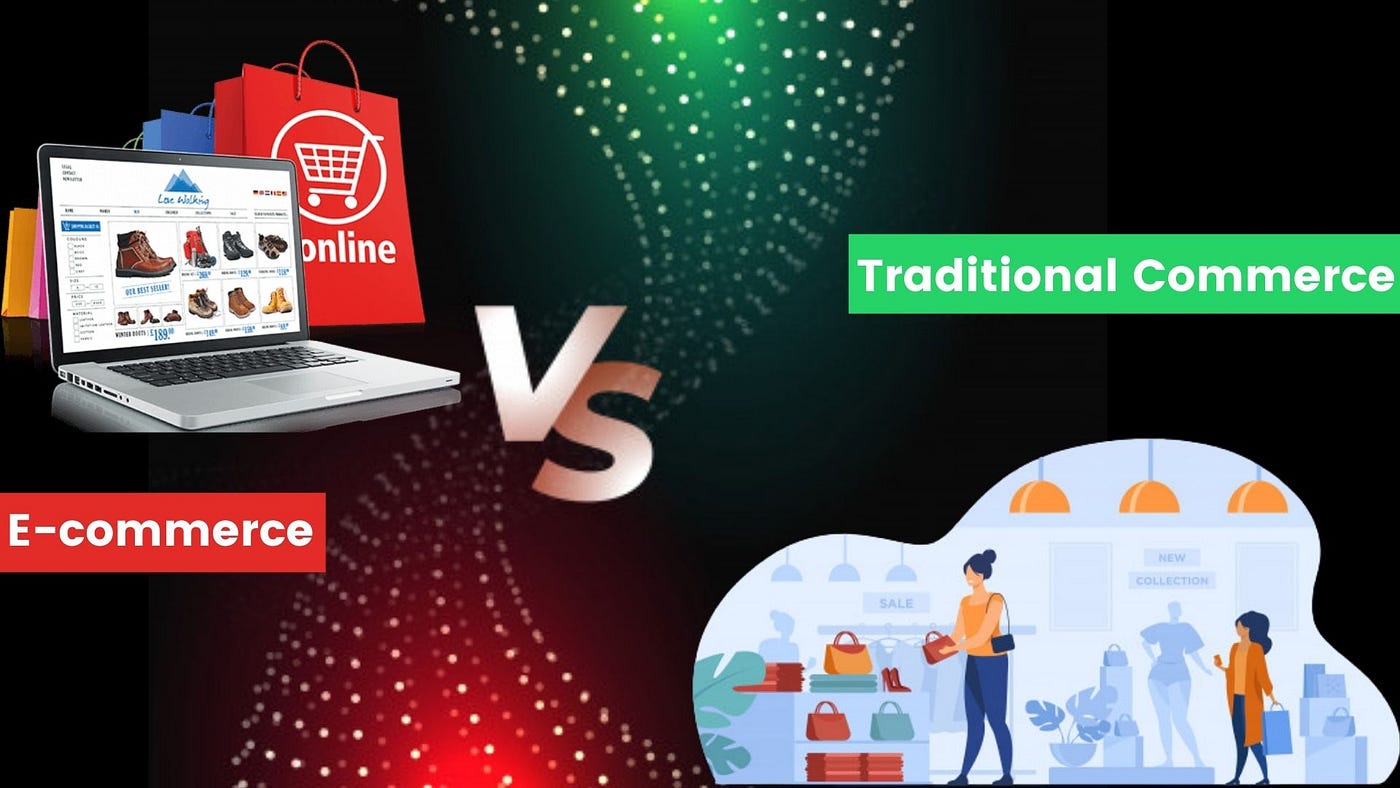The advent of technology has revolutionized the way we interact, work, and even shop. One of the most striking transformations has occurred in the retail industry, with the rise of e-commerce. This article dives into the ongoing debate of e-commerce vs traditional commerce, shedding light on why online shopping has become the dominant choice for millions.
Introduction: The Great Commerce Shift
In a world that’s growing increasingly digital, the shift from traditional commerce to e-commerce feels inevitable. Consumers are drawn to the convenience, variety, and cost-saving benefits of online shopping, leaving the brick-and-mortar stores to adapt or risk extinction. While traditional commerce still holds a nostalgic charm, the dominance of e-commerce has reshaped expectations and habits.
What is E-commerce?
E-commerce, or electronic commerce, involves buying and selling goods or services over the internet. Platforms like Amazon, eBay, and Shopify have made it possible to purchase almost anything with a few clicks. This form of commerce spans various models, including B2B (business-to-business), B2C (business-to-consumer), and even C2C (consumer-to-consumer).
Types of E-commerce Platforms
- Marketplace Models: Amazon, Etsy
- Brand Websites: Nike, Apple
- Subscription Services: Netflix, Dollar Shave Club
What is Traditional Commerce?
Traditional commerce is the conventional way of shopping, involving physical stores where customers can interact directly with products before purchasing. It has been the backbone of retail for centuries, offering a tangible shopping experience that fosters personal connections between sellers and buyers.
Why E-commerce is Taking Over
Convenience at Your Fingertips
E-commerce allows consumers to shop 24/7 without leaving their homes. Whether it’s late at night or during a lunch break, online stores are always open.
Endless Variety
Unlike traditional commerce, e-commerce platforms are not restricted by shelf space. Customers can browse a wide array of products and brands globally, often with detailed reviews to aid their decisions.
Cost Savings
From competitive pricing to flash sales and discounts, e-commerce offers financial benefits that traditional stores struggle to match. Additionally, consumers save on transportation costs and time.
Personalized Shopping Experience
With advanced algorithms, e-commerce platforms offer personalized recommendations based on browsing history and preferences, creating a tailor-made shopping journey.
Challenges of E-commerce
- Lack of Physical Interaction: Customers cannot physically inspect products before buying.
- Shipping Delays: Deliveries can take days or weeks, depending on logistics.
- Cybersecurity Concerns: Online shopping comes with the risk of data breaches and fraud.
Advantages of Traditional Commerce
Tactile Experience
Touching, trying, and feeling products before purchasing builds consumer confidence.
Immediate Gratification
In-store purchases allow customers to take products home immediately, eliminating the waiting time.
Local Community Support
Shopping at local stores fosters community engagement and supports small businesses.
How E-commerce is Redefining Consumer Behavior
Modern consumers prioritize convenience, speed, and efficiency, making e-commerce their preferred mode of shopping. Smartphones and apps have further simplified the process, making purchases possible with just a few taps. The COVID-19 pandemic also accelerated the adoption of e-commerce, pushing traditional shoppers online.
Future of Traditional Commerce
Although e-commerce is booming, traditional commerce is not obsolete. Physical stores are evolving into experiential spaces where consumers can enjoy unique, immersive experiences that e-commerce cannot replicate. Hybrid models like click-and-collect are gaining popularity, blending the best of both worlds.
Conclusion
The battle of e-commerce vs traditional commerce highlights the transformative power of technology in retail. While e-commerce continues to dominate with its convenience and accessibility, traditional commerce holds its ground with tangible experiences and personal connections. Together, they form a dynamic ecosystem that caters to diverse consumer needs.




